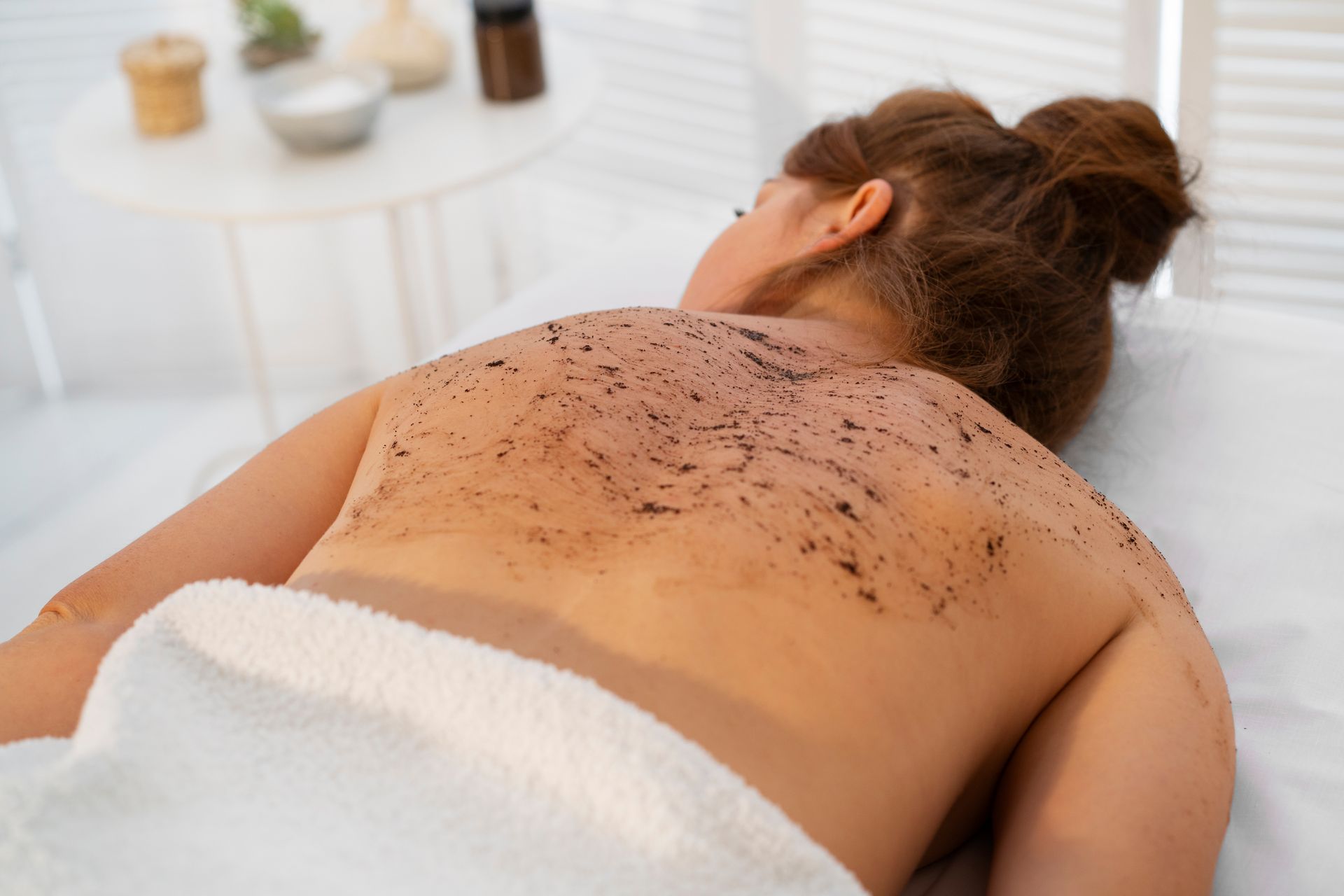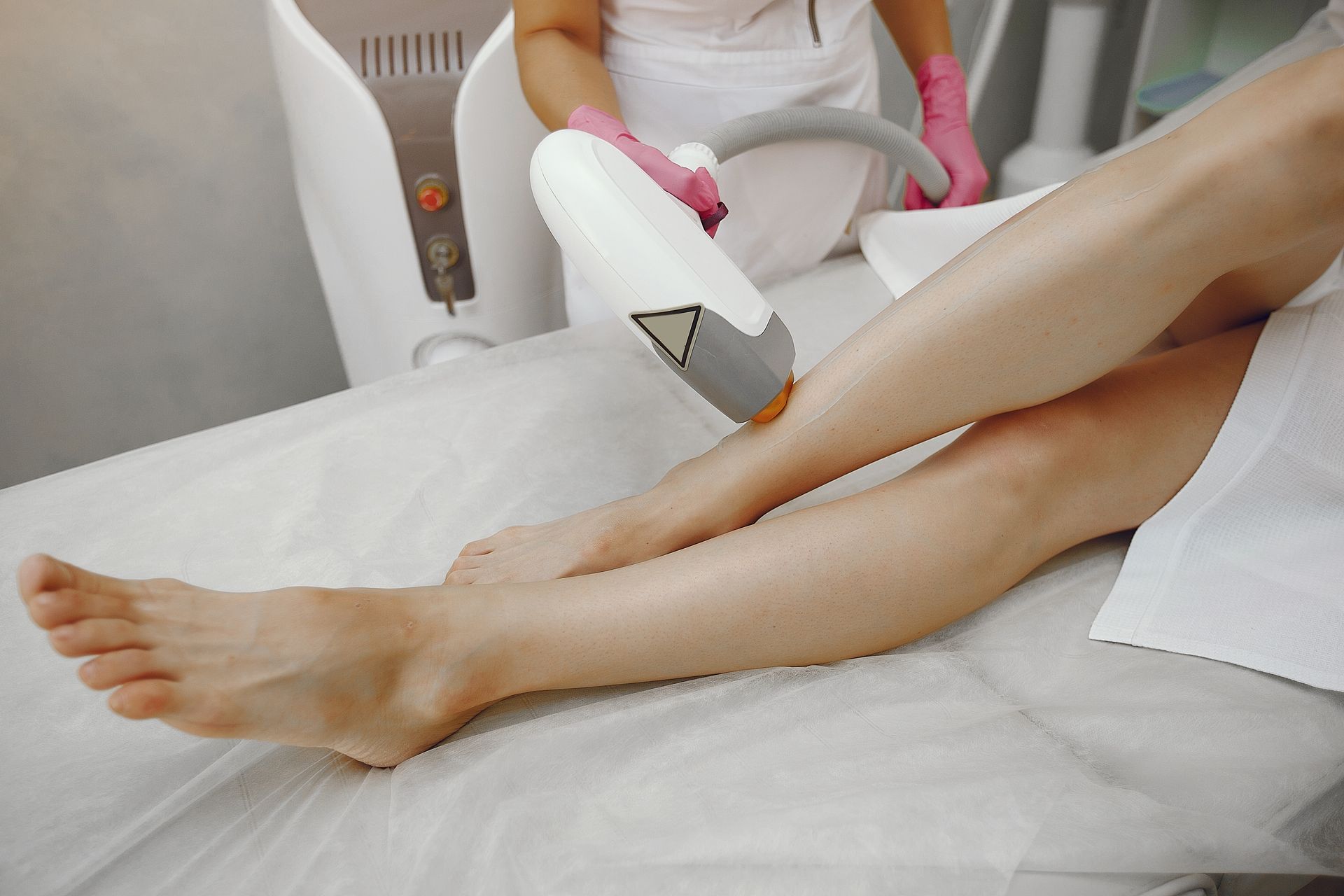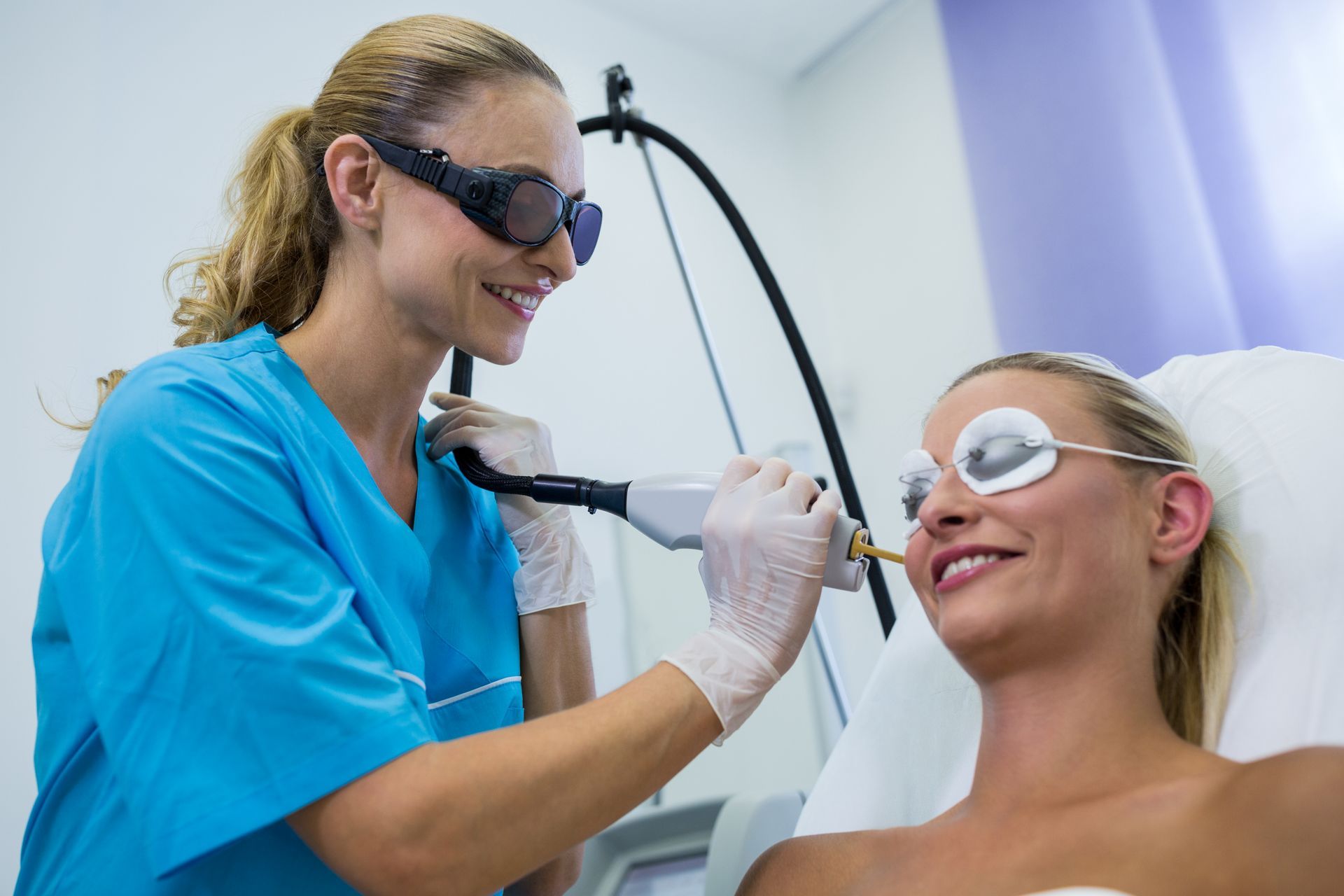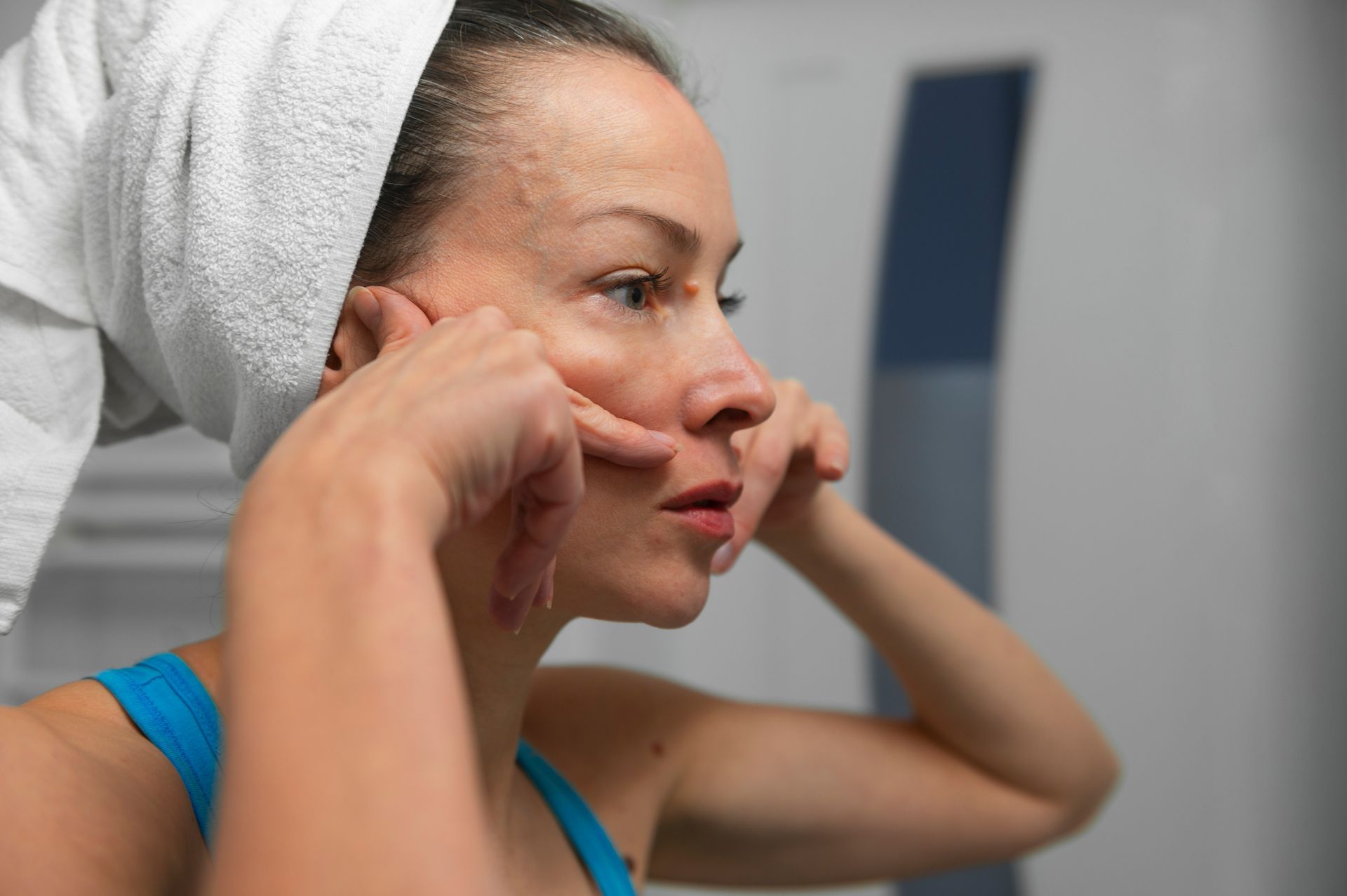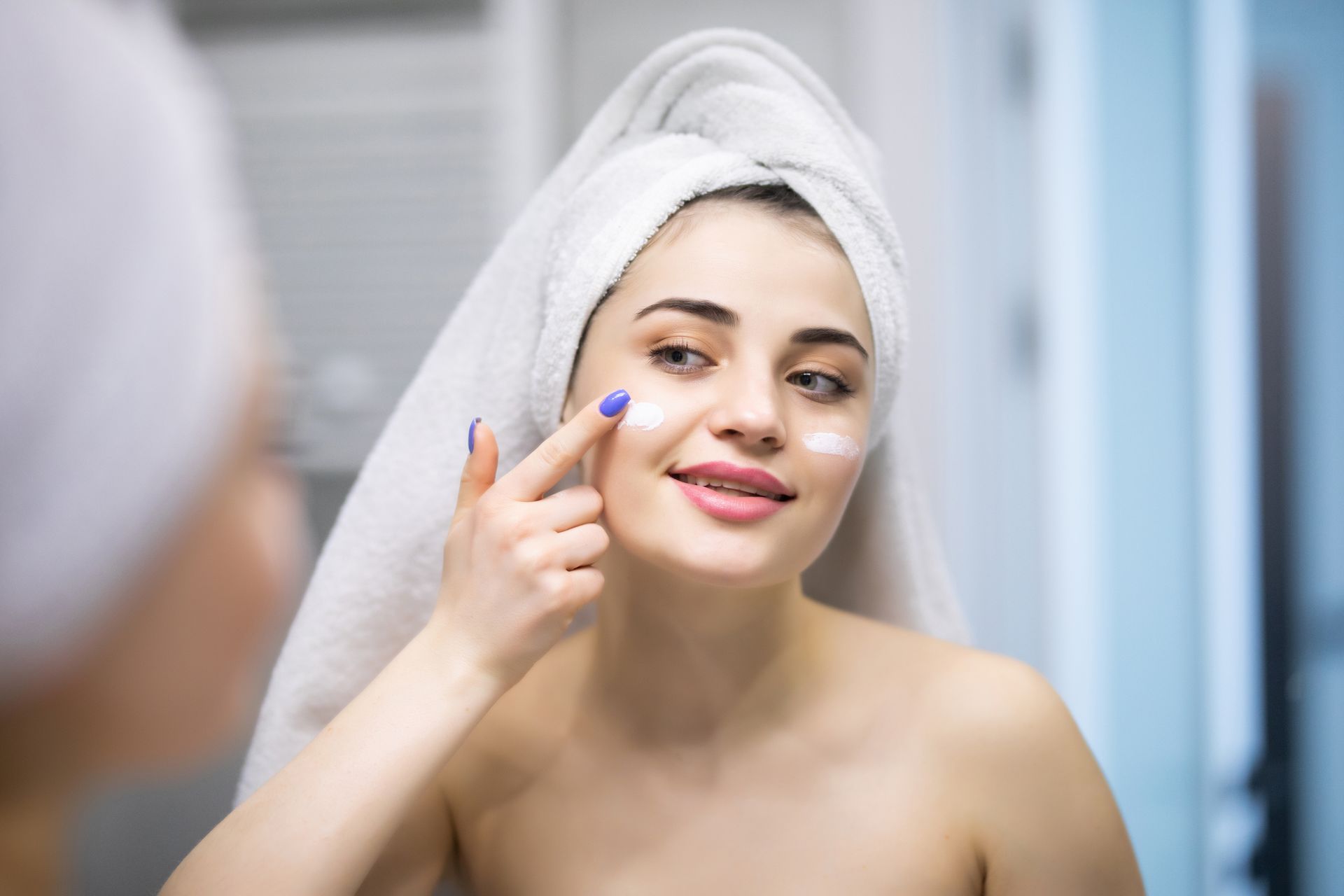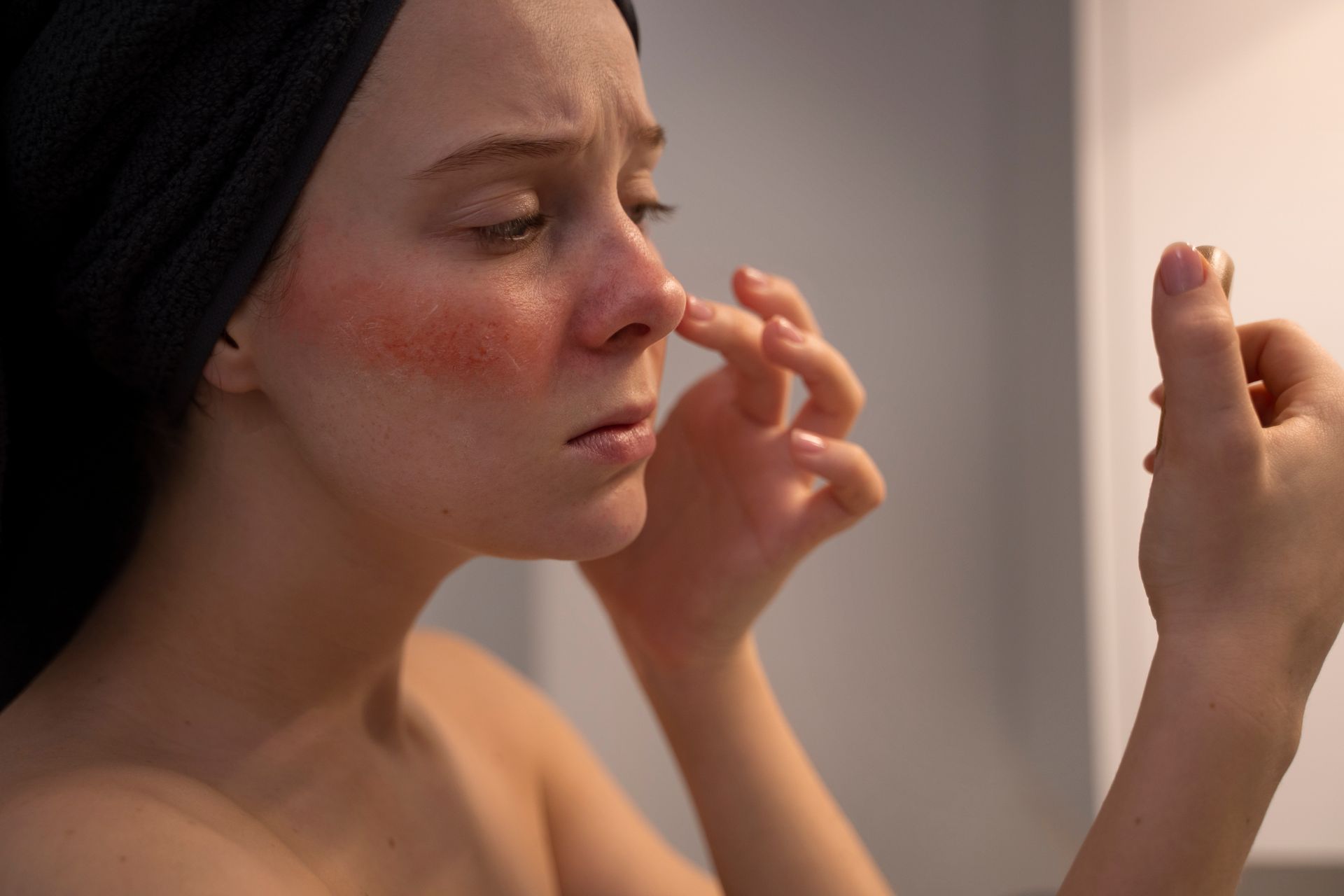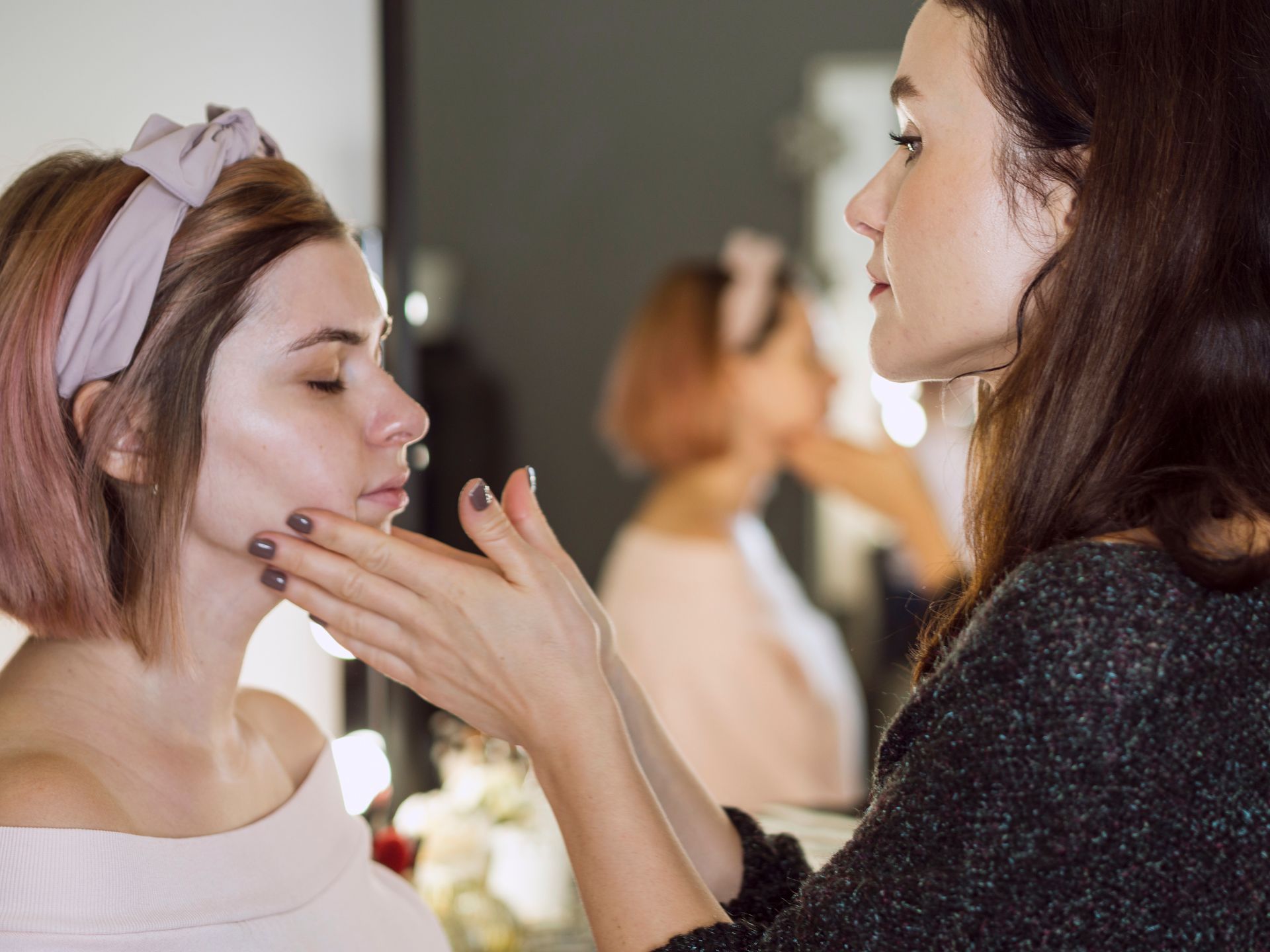The Health-Driven Benefits of Laser Hair Removal
In recent years, the pursuit of smooth, hair-free skin has transcended the realms of beauty and aesthetics, delving deeper into the domain of wellness and health. Laser hair removal, once primarily associated with cosmetic aspirations, has emerged as a cutting-edge technique celebrated not only for its cosmetic benefits but also for its profound impact on health and overall well-being.
The procedure itself represents a pinnacle in the evolution of hair removal techniques, tracing a trajectory from antiquated methods to the precision and effectiveness of modern technology. The quest for hair removal has historically taken diverse forms, from rudimentary practices like
shaving and
waxing to more advanced methods such as electrolysis. However, laser hair removal has redefined the landscape, promising not just a fleeting solution but a long-term, health-oriented approach to managing unwanted hair.
As we embark on a deeper exploration, it becomes evident that the health
benefits of laser hair removal encompass more than just skin-deep improvements. These extend to mitigating skin irritations, reducing the incidence of ingrown hairs, fostering better hygiene, and potentially addressing certain skin conditions. This transformation from a cosmetic pursuit to a health-oriented practice prompts a reconsideration of its implications and applications in our lives.
What Laser Hair Removal Is All About
Laser hair removal operates on a sophisticated scientific principle that revolutionizes traditional hair removal techniques. Understanding the mechanism behind this procedure involves unraveling the intricate workings of laser technology and its precise targeting of hair follicles.
At its core, laser hair removal harnesses the power of concentrated light beams emitted by a specialized device. This intense light energy is absorbed by the pigment in hair follicles, which are small sacs within the skin responsible for hair growth. The fundamental principle hinges on selectively heating these follicles to impair their ability to produce hair without causing damage to the surrounding skin.
The process begins as the laser emits a specific wavelength of light that is absorbed by the melanin, the pigment responsible for hair color, within the targeted hair follicles. This absorption generates heat, which subsequently damages the follicle's ability to regenerate hair. The precision of the laser allows it to precisely target dark, coarse hairs while leaving the surrounding skin undamaged.
An essential aspect of laser treatment lies in its ability to differentiate between the melanin in the hair follicle and the surrounding skin. This differentiation is crucial to
ensure the safety and effectiveness of the procedure. Advanced laser systems incorporate various wavelengths and settings to accommodate different skin tones and hair colors, enhancing their versatility and safety across diverse individuals.
The targeting of hair follicles involves a meticulous process that optimizes the energy delivered to the follicle while safeguarding the surrounding tissue. The depth, intensity, and duration of the laser pulse are fine-tuned to effectively disable the follicle while minimizing any potential discomfort or adverse effects.
Health Benefits of Laser Hair Removal
Improved Skin Health
Laser hair removal contributes significantly to enhancing skin health by mitigating various issues associated with traditional hair removal methods. The process eliminates the need for constant shaving, waxing, or plucking, which can often cause skin trauma and irritation. With laser treatment, the reduction of unwanted hair minimizes the strain on the skin, leading to a smoother and more rejuvenated skin surface.
Reducing Ingrown Hairs
One of the primary advantages of laser hair removal is its ability to significantly reduce the occurrence of ingrown hairs. Ingrown hairs, common after shaving or waxing, result from hair follicles curling back into the skin instead of growing outward. By disrupting hair growth at the follicle, laser treatment prevents the formation of ingrown hairs, offering relief from the discomfort and inflammation they cause.
Minimizing Skin Irritation
The repetitive nature of traditional hair removal methods often leads to skin irritation, redness, and even allergic reactions. Laser hair removal offers a solution by reducing irritation associated with these methods. The precision of the laser targets hair follicles without causing surface damage, leading to less skin irritation and a more comfortable experience overall.
Hygienic Advantages
Laser hair removal not only aids in aesthetics but also contributes to improved hygiene. With fewer hair follicles, there's a decrease in the potential accumulation of dirt, oils, and sweat on the skin surface. This reduction in hair density results in a cleaner and more hygienic environment, particularly in areas prone to sweating or moisture retention.
Decreasing Bacterial Growth
Hair removal via laser can also reduce the breeding ground for bacteria on the skin. Hair follicles can trap bacteria, leading to infections or acne. By reducing hair density through laser treatment, the likelihood of bacterial growth decreases, promoting healthier skin and minimizing the risk of skin infections.
Managing Sweat and Odor
Areas with dense hair growth often retain more sweat and subsequently develop odors. Laser hair removal reduces hair density, which can contribute to a decrease in sweat production and odor retention. This improvement in sweat management leads to increased comfort and confidence.
Potential Impact on Skin Conditions
Laser hair removal offers hope for managing conditions like folliculitis and psoriasis. By reducing hair density, it may ease inflammation and discomfort associated with folliculitis, while also potentially alleviating irritation and symptoms in areas affected by psoriasis. Though more research is needed, this procedure shows promise as a supportive measure for these skin conditions, offering potential relief beyond hair reduction.
Managing Folliculitis
Folliculitis, the inflammation of hair follicles, can result from bacterial or fungal infections, causing redness, itching, and pustules. Laser hair removal, by reducing hair density and minimizing the chance of bacterial growth, can aid in managing and preventing recurrent folliculitis.
Alleviating Psoriasis Symptoms
For individuals with psoriasis, laser hair removal might alleviate symptoms in affected areas. The procedure's ability to reduce irritation and inflammation can provide relief to individuals with psoriatic plaques in hair-bearing regions, potentially reducing the severity of symptoms.
Laser hair removal's health benefits extend beyond mere aesthetics, offering a holistic approach to skin health and overall well-being by addressing various concerns associated with conventional hair removal methods.
Safety Considerations and Risks
While laser hair removal is generally considered safe, there are potential risks and side effects that individuals should be aware of before undergoing treatment. These may include:
- Temporary redness, swelling, or discomfort in the treated area is common and usually subsides within a few hours to a few days.
- Some individuals may experience temporary lightening or darkening of the skin in the treated area. This typically resolves on its own but may be more persistent in individuals with darker skin tones.
- In rare cases, blisters or crusting may occur, especially if the treated area is not properly cared for post-treatment.
- While uncommon, improper treatment or individual factors could lead to scarring. This risk is minimized when the procedure is performed by a trained and experienced professional.
- Although rare, some individuals might experience allergic reactions to the numbing creams or gels used during the procedure.
Factors Influencing Safety
Several factors influence the safety and effectiveness of laser hair removal:
Skin Type:
Different skin types and tones react differently to laser treatment. Individuals with darker skin tones may be at a higher risk of changes in pigmentation or other side effects. Advanced laser systems are designed to accommodate various skin types and tones to ensure safety and efficacy.
Hair Color:
The effectiveness of laser hair removal can vary based on the color of the hair. Darker, coarser hair tends to respond more effectively to laser treatment compared to lighter hair colors.
Professional Expertise:
The competence and experience of the practitioner performing the procedure significantly impact its safety and effectiveness. Trained professionals who understand the intricacies of the technology and have experience with diverse skin and hair types can minimize risks.
Preparation and Aftercare: Adhering to
pre-treatment instructions, such as avoiding sun exposure or specific skincare products, and following proper aftercare guidelines greatly influence the safety and success of the procedure.
Medical History and Medications: Individuals with certain medical conditions or those taking specific medications might not be suitable candidates for laser hair removal. A comprehensive consultation with a healthcare professional before the procedure is essential to identify any contraindications or potential risks.
Understanding these risks and safety considerations, alongside proper evaluation and adherence to pre- and post-procedure guidelines, is crucial in ensuring a safe and effective laser hair removal experience.
Does Laser Hair Removal Work for Everyone?
Laser hair removal is generally
suitable for individuals seeking semi-permanent hair reduction. Ideal candidates include those with darker hair and lighter skin tones, as the laser targets the pigment in the hair follicles. However, advancements in technology have allowed for treatments across a broader range of skin and hair types.
The effectiveness of laser hair removal can vary based on skin and hair color. Dark, coarse hair responds most effectively to the treatment, while lighter hair colors may require more sessions for noticeable results. Advanced laser systems are equipped to accommodate diverse skin tones and hair colors.
This procedure's effectiveness often relies on individual characteristics, and consulting with a professional can determine if laser hair removal is suitable for specific skin and hair types.
Comparing Laser Hair Removal to Other Methods
Laser hair removal offers several advantages over traditional methods like shaving, waxing, and plucking. While traditional methods provide temporary results, often requiring frequent maintenance, laser hair removal offers a
more long-term solution. Also, laser treatment targets hair follicles, reducing the likelihood of ingrown hairs and skin irritation commonly associated with traditional techniques.
Laser hair removal provides more long-lasting results compared to traditional methods. While multiple sessions are required for optimal outcomes, the reduction in
hair growth is typically semi-permanent. In contrast, traditional methods necessitate regular upkeep, leading to ongoing costs and time investment.
The distinct advantage of laser hair removal lies in its ability to offer more enduring results and diminish the need for continual maintenance associated with traditional hair removal techniques.
Addressing Misconceptions
There are
common misconceptions about laser hair removal, such as it being painful or only suitable for certain skin types. In reality, advancements in technology have made the procedure more comfortable, and it can be adapted to various skin tones and hair colors. Further, with proper preparation and aftercare, any discomfort is typically minimal and temporary.
Some individuals worry about the safety and effectiveness of laser hair removal. It's important to note that when performed by trained professionals using appropriate equipment, laser hair removal is generally safe. Understanding factors like skin type, treatment settings, and pre/post-care instructions helps address concerns and ensure a positive experience.
Conclusion
Laser hair removal transcends mere aesthetics, championing improved skin health while addressing concerns like ingrown hairs and skin irritation. This transformative procedure not only emphasizes well-being but also holds promise for future advancements, aiming to make treatments safer, more precise, and accessible to a wider range of individuals. It represents a shift towards a holistic approach, ensuring beauty aligns with enhanced skin health, offering a glimpse into a future where laser technology further revolutionizes personal care.
BOOK YOUR FREE SESSION
